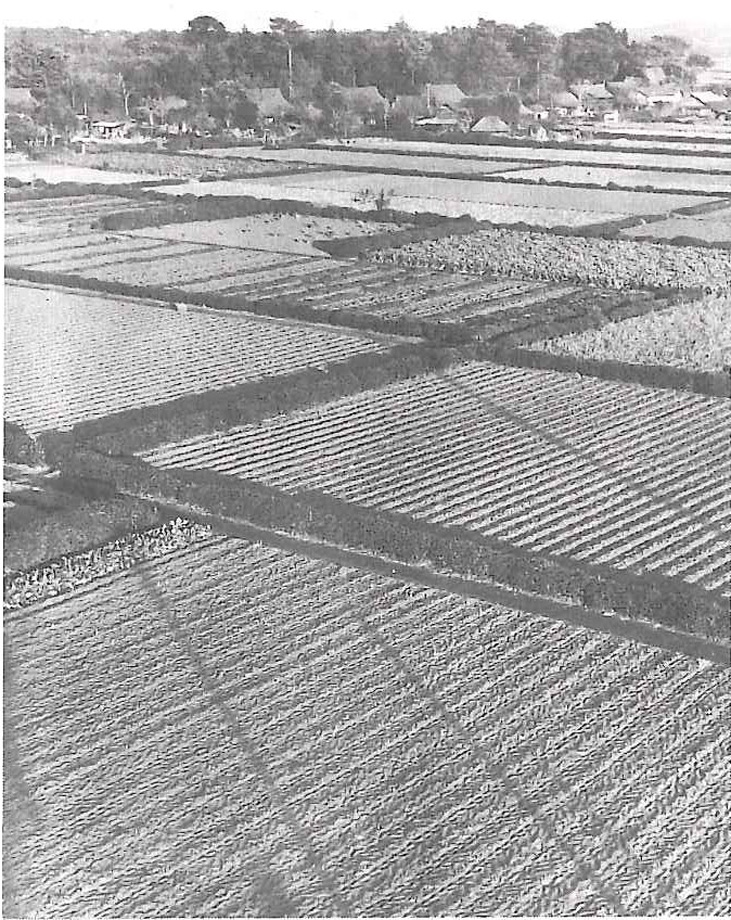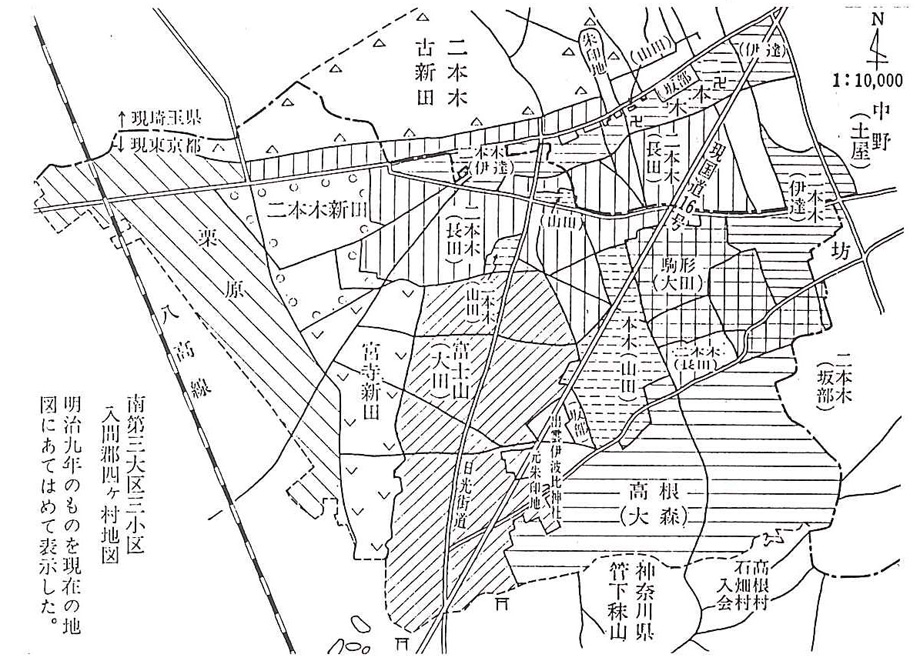| 江戸に幕府が開かれ、この地方も活気をもつようになりました。江戸築城や民家の土蔵造りの材料として石灰が成木から江戸に運ばれるようになり、箱根ヶ崎は運搬の中継地となりました。 | The relocation of the Tokugawa Shogunate government to Edo (old Tokyo) made this region more vibrant. For the construction of Edo Castle and private family storehouses, lime was carried from Nariki village to Edo, and Hakonegasaki became a transit point for its transportation. |
| 17世紀中頃には、日光東照宮警備の千人同心が通行するようになり、箱根ヶ崎は宿駅として整備されました。 | In the mid-17th century, Hakonegasaki developed as a post station town, with one thousand constables now passing through the area on their way to guard the security of Toshogu Shrine in Nikko. |
| 寛文8年(1668年)の検地によると、箱根ヶ崎、石畑、殿ヶ谷、岸は山口領村山村と一村として扱われており、家数約260軒が数えられます。 | According to the land survey of 1668, Hakonegasaki, Ishihata, Tonogaya, and Kishi were regarded as one village, Murayama Village of Yamaguchi-ryo territory, in which approximately 260 houses were counted. |
| 18世紀に入ると、将軍吉宗は年貢の増加をねらって、新田開発を奨励しました。長谷部新田、下師岡新田、栗原新田は、この時に開かれたものです。 | With the beginning of the 18th century, Shogun (General) Yoshimune encouraged the development of a 'Shinden' (new rice field) for the purpose of increasing the tribute. Hasebe Shinden, Shimo-Morooka Shinden and Kurihara Shinden were developed at this time. |
| 旧元狭山村の地域は、駒形富士山が大田氏、高根が大森氏、二本木が山田氏と長田氏、伊達氏のように旗本によって治められていました。 | The areas of the former Moto-Sayama Village were ruled by Hatamoto (direct feudatory retainers of the shogun) as was the case in the Komagata-Fujiyama area which involved the Ota clan, in the Takane area with the Omori clan and in the Nihongi area with the Yamada, Nagata and Date clans. |


